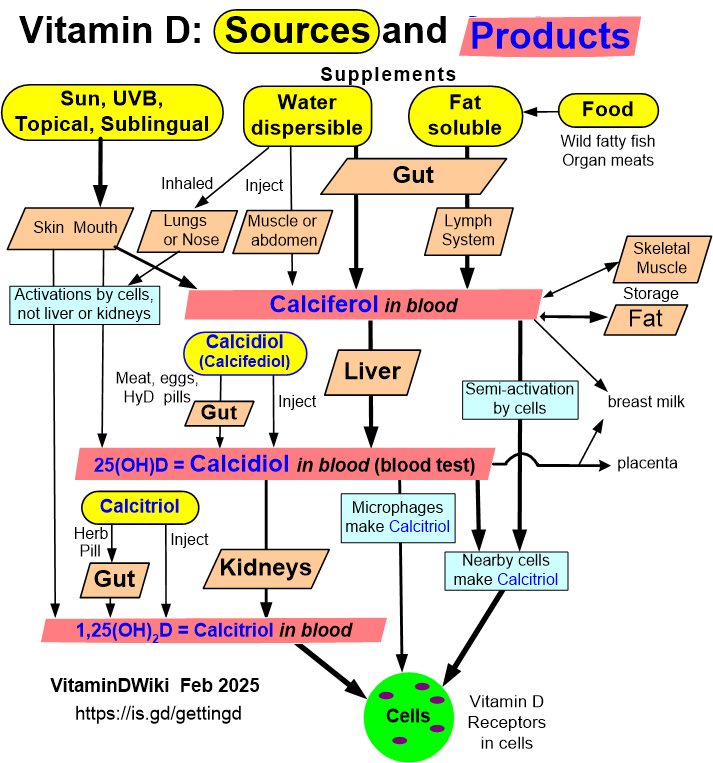Semi-activated vitamin D (HyD3) successfully being used in human trials – RCT
A 25-Hydroxycholecalciferol-Fortified Dairy Drink Is More Effective at Raising a Marker of Postprandial Vitamin D Status than Cholecalciferol in Men with Suboptimal Vitamin D Status.
J Nutr. 2017 Sep 20. pii: jn254789. doi: 10.3945/jn.117.254789. [Epub ahead of print]
Guo J1,2,3, Jackson KG1,2,3, Che Taha CSB4, Li Y2, Givens DI1,2,3, Lovegrove JA5,2,3.

Background: One strategy for improving population vitamin D status is consumption of fortified foods. However, the effects of dairy products fortified with different vitamin D isoforms on postprandial vitamin D status and metabolic outcomes have not been addressed.
Objective: We investigated whether consumption of dairy drinks fortified with either 25-hydroxycholecalciferol [25(OH)D3] or cholecalciferol (vitamin D3) had differential effects on 24-h circulating plasma 25(OH)D3 concentration (a marker of vitamin D status) and cardiometabolic risk markers.
Methods: A randomized, controlled, 3-way crossover, double-blind, postprandial study was conducted in 17 men with suboptimal vitamin D status [mean ± SEM age: 49 ± 3 y; body mass index (in kg/m2): 26.4 ± 0.6; and plasma 25(OH)D3 concentration: 31.7 ± 3.4 nmol/L]. They were randomly assigned to consume 3 different test meals (4.54 MJ, 51 g fat, 125 g carbohydrate, and 23 g protein), which contained either a nonfortified dairy drink (control), 20 μg 25(OH)D3-fortified (+HyD3) dairy drink, or 20 μg vitamin D3-fortified (+D3) dairy drink with toasted bread and jam on different occasions, separated by a 2-wk washout. Plasma 25(OH)D3 concentrations and cardiometabolic risk markers, including vascular stiffness, serum lipids, and inflammatory markers, were measured frequently within 8 h postprandially and 24 h after the dairy drink was consumed.
Results: Plasma 25(OH)D3 concentrations (the primary outcome) were significantly higher after the +HyD3 dairy drink was consumed compared with +D3 and control (P = 0.019), which was reflected in the 1.5-fold and 1.8-fold greater incremental area under the curve for the 0-8 h response, respectively. The change in plasma 25(OH)D3 concentrations from baseline to 24 h for the +HyD3 dairy drink was also 0.9-fold higher than the +D3 dairy drink and 4.4-fold higher than the control (P < 0.0001), which were not significantly different from each other.
Conclusion: The dairy drink fortified with 25(OH)D3 was more effective at raising plasma 25(OH)D3 concentrations postprandially than was the dairy drink fortified with vitamin D3 in men with suboptimal vitamin D status. This trial was registered at clinicaltrials.gov as NCT02535910.
PMID: 28931588 DOI: 10.3945/jn.117.254789
Publisher charges for the PDF
